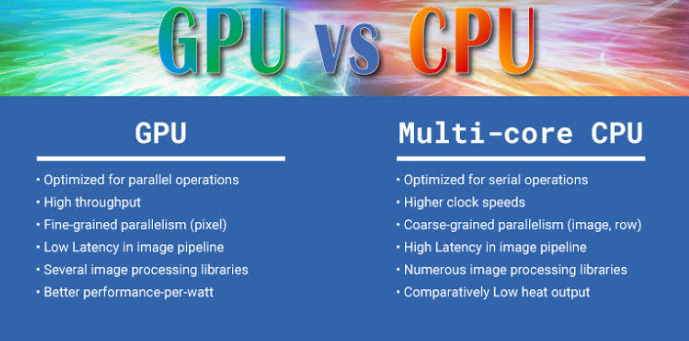Image processing has become an integral part of various industries, from entertainment and gaming to healthcare and scientific research. As technology advances, two key players have emerged for handling image processing tasks: the Central Processing Unit (CPU) and the Graphics Processing Unit (GPU). Each of these processing units has its own set of strengths and weaknesses, making them suitable for different types of image-processing tasks. In this article, you’ll delve into the differences between GPU and CPU image processing to help you understand when and why you might choose one over the other.
Understanding CPU Image Processing
The CPU, often referred to as the “brain” of the computer, is a general-purpose processor responsible for executing a wide range of tasks. While it’s capable of handling image processing tasks, its primary design is geared towards handling various instructions and calculations. CPUs are optimized for tasks that require sequential processing, complex decision-making, and multitasking.
When it comes to image processing, CPUs are ideal for tasks that are not highly parallelizable. These tasks involve sequential steps or decision-making processes, such as reading and writing files, applying simple filters, and managing memory. Additionally, CPUs excel at running software that is not optimized for parallel processing, making them crucial for applications that rely heavily on single-threaded performance.
For instance, when working with a GPU virtual desktop that requires running multiple applications simultaneously while maintaining a smooth user experience, the CPU’s multitasking prowess shines. It can allocate resources, manage system-level processes, and ensure that each application gets the necessary computing power.
The Power of GPU Image Processing
On the other hand, GPUs are specialized processors designed to accelerate rendering and image-processing tasks by parallelizing operations. Unlike CPUs, which excel at sequential tasks, GPUs are optimized for parallel tasks that can be broken down into smaller, independent subtasks. This makes GPUs incredibly powerful when it comes to tasks that involve massive amounts of data simultaneously.
In image processing, GPUs truly shine when dealing with tasks like real-time rendering, 3D graphics, video transcoding, and complex simulations. The parallel architecture of GPUs enables them to process a large number of pixels, textures, and vertices simultaneously, resulting in significantly faster rendering times and improved performance. For example, when editing high-resolution images or processing intricate visual effects in a video game, a GPU’s parallel processing capability becomes invaluable.
When you’re working with a GPU virtual desktop, you’re harnessing the power of remote GPUs to perform complex image processing tasks. This is particularly beneficial for professionals who need to access resource-intensive applications from devices that might not have the necessary hardware capabilities. The GPU virtual desktop model allows for seamless and efficient image processing without straining the local device’s resources.
Choosing the Right Processor for the Job
The decision between using a CPU or GPU for image processing largely depends on the nature of the task at hand. If the task involves linear processing, sequential steps, or multitasking, the CPU is the go-to choice. On the other hand, if the task requires heavy parallelization and real-time processing, the GPU is the clear winner.
In many cases, a combination of both CPU and GPU processing might be ideal. This approach, known as heterogeneous computing, leverages the strengths of both processors to optimize performance. For instance, while the CPU handles the decision-making aspects and manages the overall system, the GPU can focus on intensive image-processing tasks, leading to an efficient and balanced workflow.
Insights and Takeaways
In the realm of image processing, choosing between a CPU and a GPU depends on the specific requirements of the task. CPUs excel at handling sequential tasks, multitasking, and managing system-level processes. On the other hand, GPUs are the powerhouse for parallel processing tasks, delivering exceptional performance in real-time rendering, graphics-intensive applications, and complex simulations. Understanding the strengths of each processor empowers professionals to make informed decisions based on the demands of their work.
Whether you’re editing high-resolution images, rendering intricate 3D scenes, or utilizing a GPU virtual desktop to access resource-intensive applications, the choice between CPU and GPU processing significantly impacts the speed, efficiency, and quality of image processing tasks. By selecting the right tool for the job, individuals and businesses can unlock the full potential of their image-processing endeavors.
